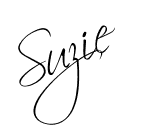I actually started the dress today.
Sewing it together, I mean.
Well, the lining at any rate.
I should be getting this started
after all
the wedding is
only
1 month from today!!!
I should be getting this started
after all
the wedding is
only
1 month from today!!!
The lining is 100% polyester,
very soft and drapy.
A perfect lining fabric.
Light as a feather.
Great to wear.
Not so great to sew with.
It slips, snags, shifts, puckers easily.
Generally a pain in the you-know-what.
But all is not lost.
It can be handled beautifully with soft, smooth seams
that hang just right.
Here are a few tips to help anyone working with this type of fabric.
As with any large project, save yourself some major irritation
and wind several bobbins of the fashion color, in this case white.
It
NEVER
happens at the end
of the
seam.
Never.
If your machine has a walking foot attachment,
use it.
"Load the elephant"
as my former clothing & textile professor
used to say.
The idea with a walking foot is to feed
both layers of fabric
through the stitching process
at the same time
minimizing puckering.
In lightweight fabrics,
puckering is a major problem.
When you have puckering,
the seams aren't flat
and they will hang funny.
Make sure your needle is of the right
size and weight
for the fabric.
I started with a size 10
but I immediately saw that it was
snaging the fabric.
So, I switched to a size 9 and
had a much better result.
Tissue paper.
If you don't know the
wonders of
tissue paper,
then you, my dears, have
truly been missing out.
With this lightweight, soft fabric,
I found the combo of a walking foot
and using tissue paper as a third layer
while stitching
helps to produce
perfect stitches with not a pucker in sight.
This is a sample stitch I did with the tissue paper underneath.
Even along the selvage, I got a very smooth seam.
This will go a long way in the overall look of the dress.
Just cut or tear several 2" strips of tissue paper.
While pinning the seams together, just include
the tissue paper
and sew right through all the layers.
Tear the paper away afterwards.
Try it.
Keep things clean!
I am especially mindful of this with a white fabric and
with this dress being such an important project.
1) Clean your machine well but be careful with oiling. Sew with scrap fabric until you are absolutely sure that no residual oil is dripping anywhere.
2) Keep you hands clean. Wash, wash, wash. Stay away from lotions and creams, too. They can leave oils on the fabrics.
3) Wipe down the table, machine, chair, etc., before each sewing session.
4) Food, drinks and ink pens have NO place around fabrics.
5) Have a lint roller handly. It's so nice to take care of the stray threads, lint, dog hair, etc. Just a quick swipe and their gone.
After a long day of sewing,
I now have a lining
ready for pin fitting,
seam finishing and pressing.
Coming soon:
Seam finishing
Pressing
Boning application
Bra cup application
Sew Happy,





Tissue paper? Really? Any tips on sewing satin binding to fleece? Mine keeps puckering... and bunching... and all other things I don't want to happen.
ReplyDeleteHi Kassi and anyone else with the same type of question,
ReplyDeleteI would suggest a couple of things.
First, baste everying in place the way you want it. Yes, that's right, needle and thread the old fashioned way. Baste it so that it stays in place.
Second, if your machine allows for a walking foot attachment, invest in one and use it. It will help feed the fabric layers through more evenly. The pressure foot and feed dog often will work against each other in that the feed dog will push through the fabric on the bottom while the pressure foot puts "pressure" on the top fabric and often not at the same rate where both fabrics go through the stitching process equally. The walking foot will largely correct that.
Try these techniques and see if it helps.
Let me know how it goes.
Sew Happy,
Suzie